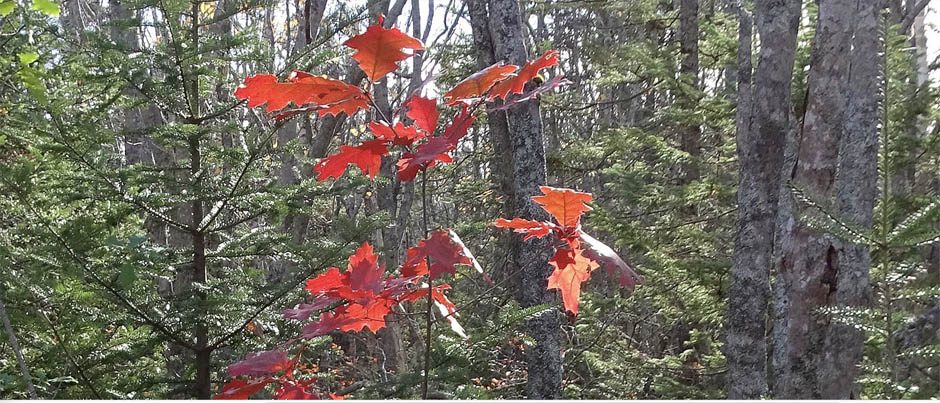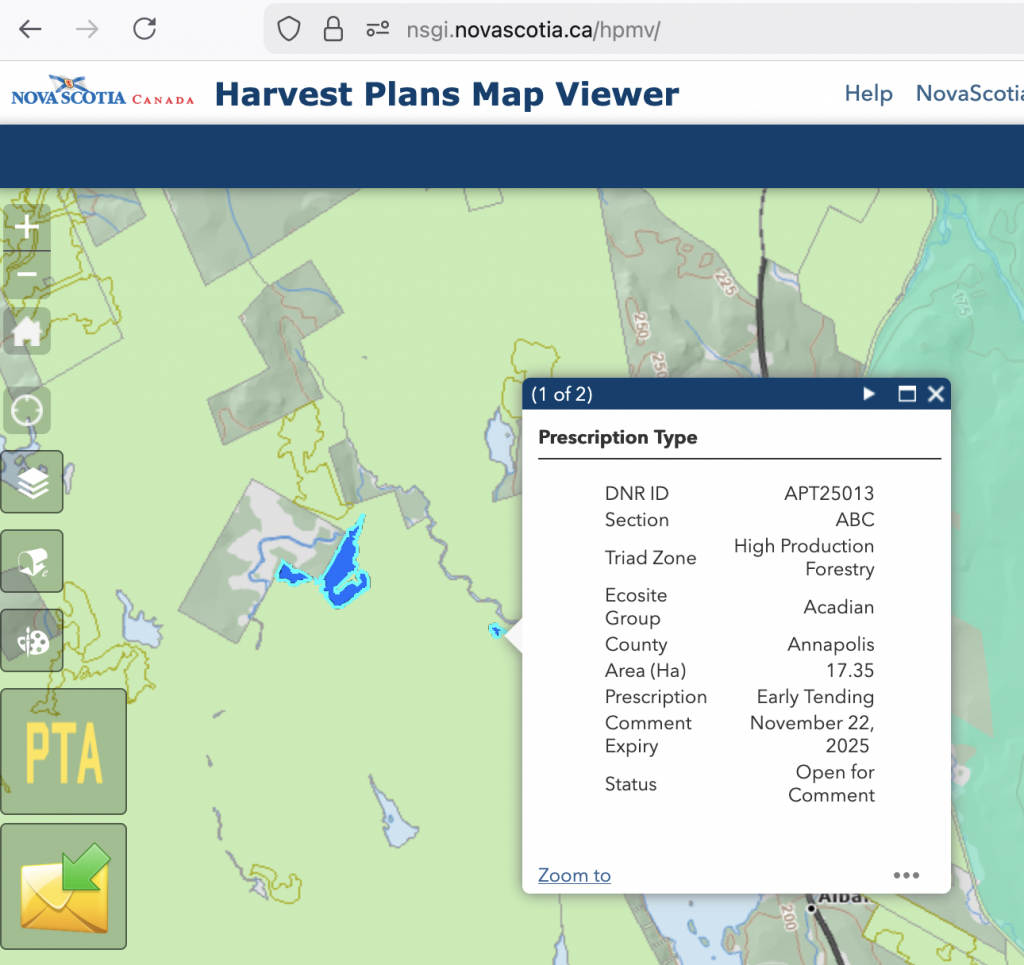Nina Newington, posted on Friends of Goldsmith Lake Wilderness Area (Public FB Page) Nov 21, 2025

Here’s what I wrote [submitted via the HPMV] for the two
Parcels.
APT25016A
The plan to turn this parcel of land into a zone of perpetual clearcutting is a needless assault on biodiversity. This is due to the location of this polygon. It stretches across a narrow tongue of crown land connecting the Cloud Lake Wilderness Area and the important complex of wetlands and forest to the west. At least three proposals to permanently protect the area around Beals Brook were submitted to the Department of Environment in 2022. Two of them included this tongue of crown land that crosses Hwy 10 to reach the existing protected area. Wildlife connectivity is severely limited in our fragmented landscape. A clearcut across this tongue in the past removed the necessary forest cover for wildlife to move freely. That cover is now reestablishing itself. The very last thing that should happen here is High Production Forestry. “Early tending” is a nice sounding phrase for grooming the site for a future of recurrent assaults on the soil, the vegetation, the wildlife. Since we humans are a part of nature and depend on healthy ecosystems, HPF practices are also damaging to our health. HPF according to DNR’s Phase 1 and Phase 2 documents is expected to include the use of herbicides such as glyphosate, most likely from the air. Spraying herbicides to suppress hardwood has no social license. This is why the government this year chose to hide the locations of approved aerial spray sites from the public.Plenty of people live around Trout Lake and along that part of Hwy 10. Has anyone asked them what they think of aerial spraying in their backyard? It is ludicrous for DNR to want only comments about the specific harvest plan footprint when forestry activities such as spraying impact watersheds.
APT25013ABC
The plan to turn this parcel of land into a zone of perpetual clearcutting is a needless assault on biodiversity. This polygon adjoins Beals Brook which is part of an important complex of wetlands and forest from Crisp Bog down through Beals Meadow and into an area of small lakes and still waters. This was historically rich habitat for the Mainland Moose. In spite of grievous amounts of clearcutting, endangered mainland moose continue to use the area. One was photographed on Beals Meadow in the fall of 2020. As Wildlife guide Perry Munro puts it, “This is not lumber country, it is moose country.” The soil is too poor to grow good lumber, but the wetlands make it very valuable for wildlife. At least three proposals to permanently protect this area around Beals Brook were submitted to the Department of Environment in 2022. Two of them included a tongue of crown land that crosses Hwy 10 to reach the existing protected Cloud Lake Wilderness Area. Wildlife connectivity is severely limited in our fragmented landscape. We need to protect large contiguous areas. Clearcutting removes essential cover. On this site, slated for ‘Early Tending’, that cover is now reestablishing itself. The very last thing that should happen here is High Production Forestry. “Early tending” is a nice sounding phrase for grooming the site for a future of recurrent assaults on the soil, the vegetation, the wildlife. Since we humans are a part of nature and depend on healthy ecosystems, HPF practices are also damaging to our health. HPF, according to DNR’s Phase 1 and Phase 2 documents, is expected to include the use of herbicides such as glyphosate, most likely from the air. There has been no aerial spraying on Crown land since 2010. This is not the time to go backwards. Spraying herbicides to suppress hardwoods has no social license. This is why the government this year chose to hide the locations of approved aerial spray sites from the public. It is ludicrous for DNR to want only comments about the specific harvest plan footprint when forestry activities such as spraying impact whole watersheds. Furthermore, spraying to kill hardwoods makes the forest more fire-prone. Hardwoods are far less flammable than softwoods. They often serve as firebreaks. The softwood monocultures that Early Tending is designed to produce are a huge fire risk. Just check out what burned at Lake George this year. These managed forests are also far less resilient to the hotter temperatures that climate change is bringing. HPF’s Early Tending poisons the plants that will survive climate change, resist wildfire, sweeten the soul and support greater biodiversity in order to favour the trees the forestry industry finds most profitable: softwoods that burn easily, and can’t take the heat. In the new reality of climate change, drought, wildfires, rising temperatures, the whole concept of HPF should be reviewed. It might have produced higher volumes of wood in the past (on suitable soils). Now it may cause more trouble than it is worth. So to sum up, don’t turn 17 hectares next to Beals Brook into an ecological hazard when it could be left alone to recover.
========
Maps (screencaortures from the HPMV) added by NSFM:


